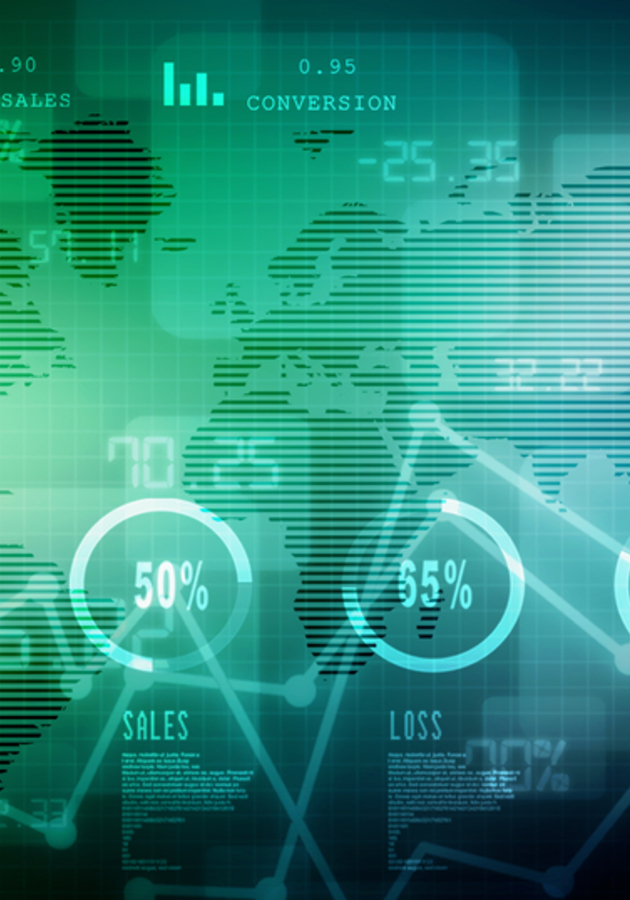What do you think the future will look like? Whatever futuristic inventions you might be imagining, they will probably arrive faster than you think. Believe it or not, science fiction concepts such as telepathy or flying cars are already a reality! In recent years, many individual strands of technological advances have started to converge and to create never-before-seen innovations. So get ready to learn all about the future!
The future is here
In May 2018, Uber held its second annual flying car conference in Los Angeles. Yes, you read that right. Flying cars. Uber Elevate wants to transform the way we get from point A to point B, and the conference was not about flying cars as such, but about the path to scale.
It might sound like something out of a science fiction movie, but flying cars have actually been around for a while. In 2019, a dozen cars were already being test-flown, and these came in all shapes and forms: motorcycles on top of oversized fans, quadcopter drones in human size and miniature space-pod airplanes.
When it comes to flying cars, Uber wants to resolve many of the issues facing transport nowadays: congestion, environmental impact, as well as speed and cost. While the marginal cost of car ownership nowadays is 59 cents per passenger mile, Uber Elevate wants to drive the cost per mile down to 44 cents. With Uber Elevate, you could quickly leap from San Diego to San Francisco at a fraction of the cost of traditional driving. And Uber has already teamed up with NASA and the FAA to create an air traffic management system.
But why now? For the longest time, flying cars have been the stuff of fiction, so why is the idea suddenly gaining traction again? The answer is simple: convergence.
The power of convergence
To understand what convergence is, you’ll first need to understand the principle of exponentially accelerating technology. This principle was first discovered by Intel founder Gordon Moore in 1965 and is also known as Moore’s Law. He realized that every 1.5 years, a computer could get twice as powerful while the price stayed the same. This is a trend that has continued to this day: it is the reason you can afford a smartphone, which is a million times more powerful than a supercomputer was in the 1970s.
Adding to that is Kurzweil’s “Law of Accelerating Returns” which states that we use new technology to design even faster technology. And now, all these rapidly accelerating strands of technological innovations are coming together in new ways - they are converging - which further drives technological progress. These convergent exponentials have the power to wash away entire markets, something termed as “disruptive innovation.”
Let’s look at Uber’s flying cars again for an example of how convergence works: It took DEPs (distributed electric propulsion) to create electromagnetic motors, and AI to fly them. Combining both created drones. The final component to make flying cars a reality was the advance of lithium-ion batteries, thanks to innovations in solar power and electric cars. Since all these have become a reality, they converged to create flying cars.
Convergent technologies
Where do you think the coldest place in the universe is? It is not somewhere out in a distant galaxy, but actually right here on planet Earth. To be precise, in sunny California! Just outside of Berkeley, there is a large white pipe hanging in a warehouse, and this pipe has been cooled down to .003 Kelvin, to almost absolute zero. To put that into perspective, the previously coldest temperature recorded was inside the Boomerang Nebula, at 1.15 Kelvin.
This white pipe is needed for quantum computing – at .003 Kelvin, you can hold a qubit in superposition, meaning it can be in several states at once. To envision superposition, imagine a coin spinning so fast that you can see both heads and tails at the same time. Getting a qubit into superposition is all part of the race to build quantum computers, which could solve problems that classical machines struggle with.
But quantum computing is not the only innovative technology awaiting us in the near future. Artificial intelligence is another example. In fact, AI has already become a reality. In 2014, Microsoft released the Chatbot Xiaoice (pronounced Shao-ice) in China. This was a chatbot designed to have friendly conversations, and since she has been introduced, she has already had 30 billion conversations with more than a 100 million humans. She was even hired to do some of the weather reporting on one of China’s news channels!
AI has slowly started to become disruptive, and this was possible thanks to the convergence of big data sets, cheap but immensely powerful GPUs (graphics processing units), and neural networks. Big data collected by giants such as Facebook, Google, and YouTube have helped AI to improve since its real power lies in finding connections between obscure bits of information – and the more information it gets, the better. Combine this with fast and powerful technology to process graphics, and the AI can enter the mainstream market.
Neural networks simulate the human brain and allow AI to learn from unstructured data. Simply connect the AI to the internet and they will do the rest! In 2011, AI was already better at identifying traffic signs than any human. AI can even write magazine-quality articles that read as if a human had written them, as well as listen and talk like a human.
The future of food
So, what could this new and fast future look like thanks to convergent technologies? Let’s take the example of food. Imagine it is 2030, and you are hungry. Hybrid cuisine seems to be the latest trend, so your AI makes a few suggestions based on your calendar, your nutritional needs, and your historical preferences. Since you are going surfing tomorrow, your AI bot suggests getting in a few extra calories tonight. You settle for Asian-Yiddish, but since you have never tried this food before, you let your AI choose the meal for you.
Eight minutes later you receive your food: An Amazon drone arrives with two bags of raw ingredients. You pack these into the seven bays of your 3D food printer and watch as the robot arm starts slicing the fresh tuna (it has learned how to do that from videos of top chefs cooking in five-star restaurants). The tuna, obviously, has been sourced from stem cells, so no living animal had to die for it. The vegetables come from a vertical farm just around the corner.
You sit down to enjoy your meal, knowing there will be zero food waste: even your plate has been 3D printed out of chocolate, so once you are finished with your meal, you also eat your plate.
Convergent technologies can definitely help solve some of the great problems of food nowadays. The current food industry is wasteful and inefficient. The average American meal has traveled 1,500 to 2,500 miles before it has reached your plate. Often, for holiday dinners, it is likely that the food on the table has traveled farther than the family sitting around the table. On top of that, around 40% of food in the U.S. gets thrown away.
But thanks to advances in food science, these might soon be problems of the past. Scientists are already experimenting with how to increase the ability of a plant to turn sunlight into food – this would mean that ultimately, you would need to eat less to get the same amount of nutrients.
The coming century
Convergent technologies can help manage and resolve many of the greatest threats facing humanity today. The most pressing issue facing us is climate change. According to leading scientists we need to limit global warming to 1.5 degrees by 2030, otherwise we will be facing catastrophic consequences.
Burning fossil fuels releases 40 billion tons of carbon dioxide into the atmosphere every year. That is akin to burning 42 million square kilometers (more than 16 million square miles) of forest every year – that’s the size of the entire continent of Africa, plus another third! Luckily, wind and solar power have made exponential advances in recent decades and can help solve the problem of burning fossil fuels. They are now cheaper than burning coal for energy.
Thanks to the development of quantum dots, solar panels have now tripled their performance: whereas before, they could only transform 21% of incoming sunlight into energy, that number has now risen to 66%. And solar and wind are converging as well: they complement one another, since it tends to be windy when the sun does not shine, and vice versa.
According to the author, the coming century will also be defined by five great migrations, which will further drive progress. Past experience has shown that migration accelerates innovation. The economist Petra Moser found that every field entered by German Jews emigrating to the U.S. had seen a subsequent 31% increase in patents. We need new ideas to tackle our present problems, and mass migration can help solve these. According to the authors, we will have five types of migration in the coming century: climate migrations, urban relocations, virtual worlds, space migration, and meta-intelligence.
Climate change will force many to migrate to new places, and those places will likely be cities. The authors predict that by 2050, 66% to 75% of the world will consist of cities. The advancement of augmented reality will also create new virtual worlds that will be more important than ever before.
The Earth is not the limit, either: the space race has been going on since the 1960s, but now it is dominated by two Silicon Valley figures; Jeff Bezos, founder of Amazon and Blue Origin and Elon Musk, founder of Tesla and SpaceX. While Jeff Bezos is aiming for the moon, Elon Musk is aiming for Mars. Either way, with convergent technologies, the space race is likely to progress faster than ever before, and space migration will likely take place in the coming century.
Meta-intelligence
Perhaps the most striking migration that is set to happen is not without, but within: meta-intelligence – a world in which humans are linked via the cloud into one giant collective consciousness. That might sound like science fiction, but the technology for it is already here.
Chemist Charles Lieber created a nanoscale meta-mesh that can be injected with a syringe and that then unfolds around the brain. This has been tested on mice, and the mouse’s neurons did not see the mesh as an invader but instead connected to it. This allowed Lieber to monitor the mouse’s brain activity in real time.
Then there are brain-computer interfaces (BCIs), that for now come in the form of headsets. Using a transcranial magnetic stimulator, magnetic pulses can be sent directly into the brain. This has already helped stroke victims to recover and even cured epileptics. Strikingly, it has also made telepathy become a reality – this was tested with one subject in France and another in India who sent words to one another via the brain connected to the internet.
Combine BCI’s and Lieber’s brain mesh, and we are ready to upload our consciousness into the cloud. The authors believe that the only way humans can participate in a future AI-dominated world is by creating this collective consciousness.
Final Notes
Many inventions we believed to be science fiction are already here; artificial intelligence that looks, talks, and thinks like a human, flying cars, telepathy, and virtual realities. Through convergence, these innovations are only set to accelerate in the coming years. Luckily, they can also help solve humanity’s greatest problems, such as climate change, food waste, and other environmental challenges.
12min Tip
Try and keep up to date with new technological innovations so as not to get left behind by AI.





























